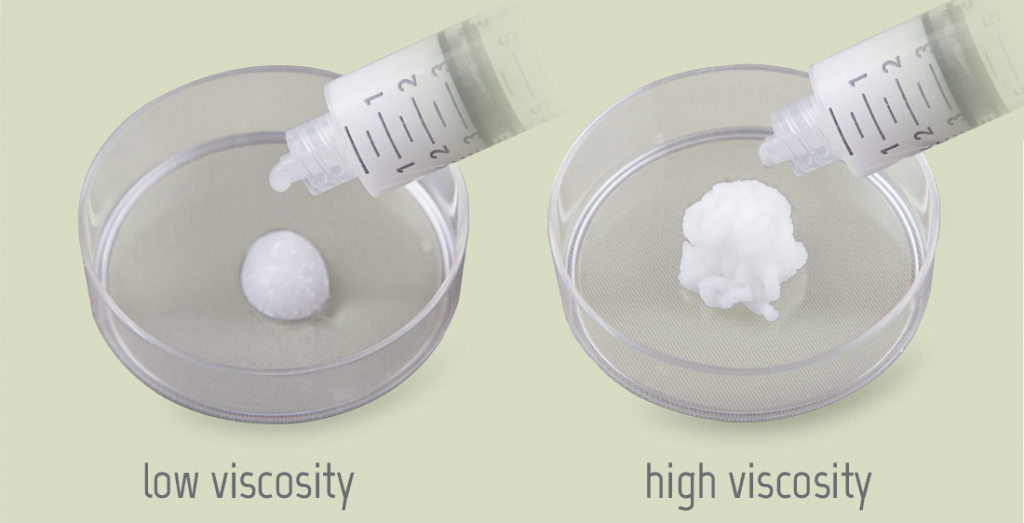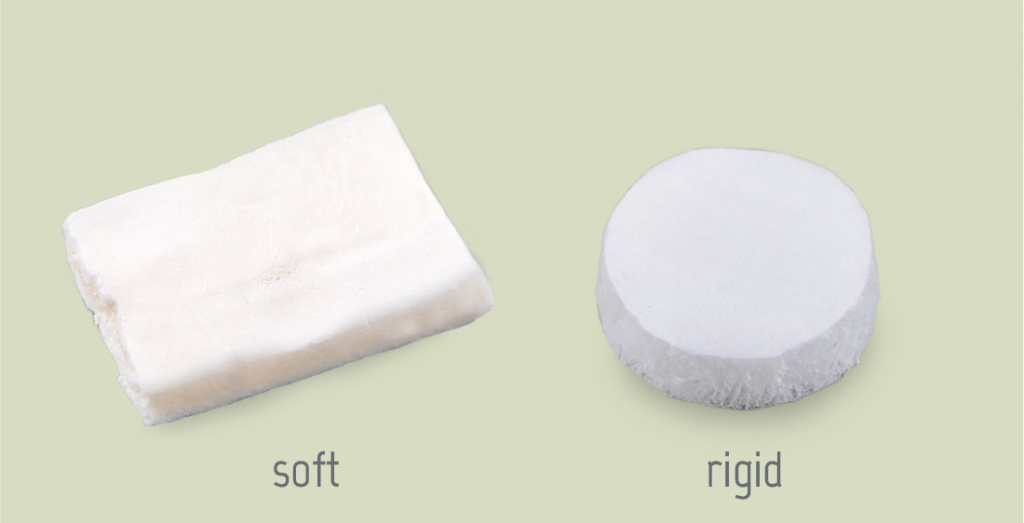Orthobiologics
Orthobiologics are a specific type of biomaterials. These materials are used by orthopedic or dental surgeons to promote the healing of bone or its surrounding tissue. Examples of orthobiologic products which are widely used are: bioactive glass, bone cement, bone void fillers and dura membranes.
Orthobiologics based on biopolymer have several advantages. Firstly, biopolymers have proven positive effects on wounds healing and tissue regeneration; in particular hyaluronic acid. Secondly, biomaterials based on biopolymers are bioresorbable; no extra procedure is necessary to remove the material. Finally the materials are highly biocompatible and will not cause any infections or adverse effects.
BioMed offers various functional forms that can support or serve as an orthobiologic material.
Examples of biopolymer based orthobiologics are given below.

Application examples
Injectable bone void filler
Our gels are miscible with various solid materials such as ceramics, tissue and bone. This enables our customer to form an injectable gel or putty based on their active material. The tunable viscosity makes the material interesting for various applications in orthopedic and dental surgery.
Membranes, films and sheets
In the field of bone regeneration various types of membranes are used. They guide and serve as scaffold for tissue regeneration. Moreover they can form a barrier and close off wounds. Collagen membranes are often used to cover dental defects.
BioMed is capable of manufacturing membranes based on collagen and other biopolymers. Mechanical properties such as tensile strength and pliability are factors that are important for the performance of these products. The membranes need to be manipulated and adapted to the surface contours of the surgical site to function correctly. BioMed Elements is capable of adjusting the tensile strength of biopolymer membranes until it is optimized for its intended purpose.
Viscosupplement
Osteoarthritis, the wear and tear of cartilage in the knee joint, is getting a more and more common condition. This is due to the general increase in age and weight of the population in the western world. The biopolymer hyaluronic acid plays an important part in the maintenance of the cartilage in the knee joint. As a person ages, the concentration of hyaluronic acid in their body decreases. This decrease results in an increase of the chance of developing osteoarthritis.
Treatments for osteoarthritis include physical therapy, pain management and in extreme cases even joint replacement. Hyaluronic acid gels are sometimes injected to improve the cushioning effect of the synovial fluid, reduce inflammation and help heal the cartilage. These gels are called viscosupplements.
BioMed Elements develops intermediates for these products. Important performance indicators, like degradation and viscosity, can be influenced by the BioMed experts. Moreover, the hyaluronic acid gel can be combined with an active ingredient that stimulates the regeneration of the cartilage and the surrounding tissue, enhancing the performance of the viscosupplement.

Gels

SPONGES
Source:
